



This project is part of the
@thi.ng/umbrella monorepo.
About
Lightweight transducer implementations for ES6 / TypeScript.
This library provides altogether ~130 transducers, reducers, sequence
generators (ES6 generators/iterators) and additional supporting
functions for composing data transformation pipelines.
The overall concept and many of the core functions offered here are
directly inspired by the original Clojure implementation by Rich Hickey,
though the implementation does heavily differ (also in contrast to some
other JS based implementations) and dozens of less common, but generally
highly useful operators have been added. See full list below.
Furthermore, most transducers & reducers provided here accept an
optional input iterable, which allows them to be used directly as
transformers instead of having to wrap them in one of the execution
functions (i.e. transduce()/transduceRight(), reduce()/reduceRight(),
iterator(), run(), step()). If called this way, transducer functions
will return a transforming ES6 iterator (generator) and reducing functions
will return a reduced result of the given input iterable.
Status
STABLE - used in production
Search or submit any issues for this package
7.0.0 release
Thanks to a PR and related
issue by
@gavinpc-mindgrub, various transducers
functions have been fixed for the case when they're invoked with an empty
string as input iterable. Furthermore,
flatten()
is always treating strings as atomic values now, whereas before top-level
strings would be split into individual characters.
6.0.0 release
BREAKING CHANGES:
- The
interpolate iterator for keyframe interpolation has been renamed
to tween. In its place there's a new higher order transducer called
interpolate, incl. syntax-sugar versions interpolateHermite and
interpolateLinear. - The previously deprecated
wrapLeft, wrapRight and wrapBoth
iterators have been removed. - The
wrap iterator has been renamed to wrapSides and has a new
signature/arguments, more aligned with the ones listed below.
The following new iterators have been added:
extendSidespadSidessymmetric
5.0.0 release
Several previously included internal support functions have been
migrated to the
@thi.ng/arrays
package. You'll need to update your imports if you've been using any of
these directly. Note that some of these functions also have changes to
their arg order. See changelog.
Functions using randomness now all support an optional PRNG
implementation of the IRandom interface from the
@thi.ng/random
package.
Support packages
Related packages
Blog posts
Installation
yarn add @thi.ng/transducers
// ES module
<script type="module" src="https://unpkg.com/@thi.ng/transducers?module" crossorigin></script>
// UMD
<script src="https://unpkg.com/@thi.ng/transducers/lib/index.umd.js" crossorigin></script>
Package sizes (gzipped, pre-treeshake): ESM: 8.53 KB / CJS: 9.11 KB / UMD: 8.28 KB
Dependencies
Usage examples
Several demos in this repo's
/examples
directory are using this package.
A selection:
| Screenshot | Description | Live demo | Source |
|---|
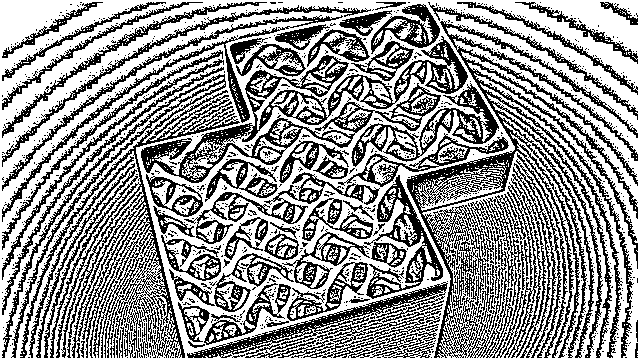 | Interactive image processing (adaptive threshold) | Demo | Source |
 | Figlet-style bitmap font creation with transducers | Demo | Source |
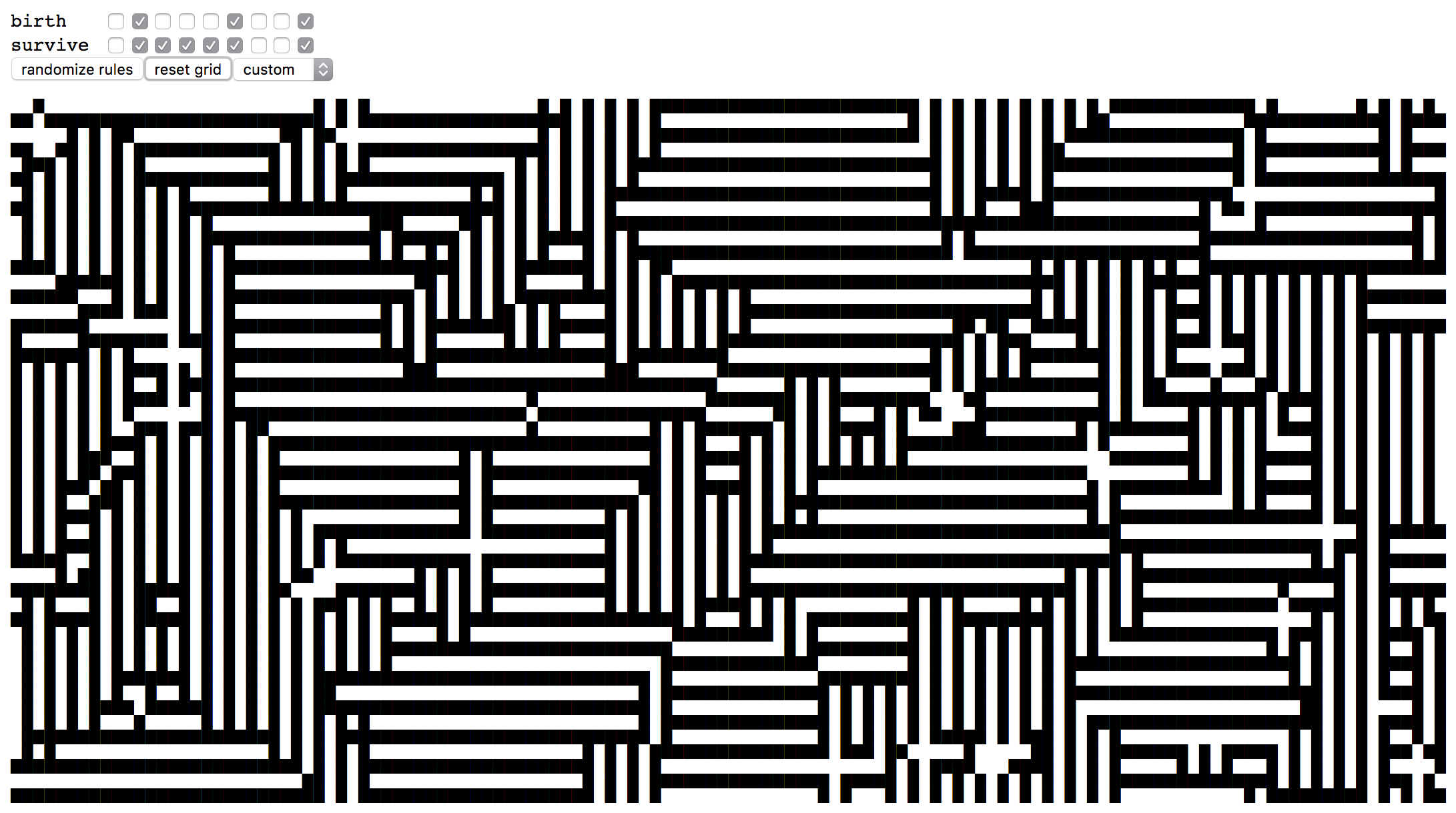 | 2D transducer based cellular automata | Demo | Source |
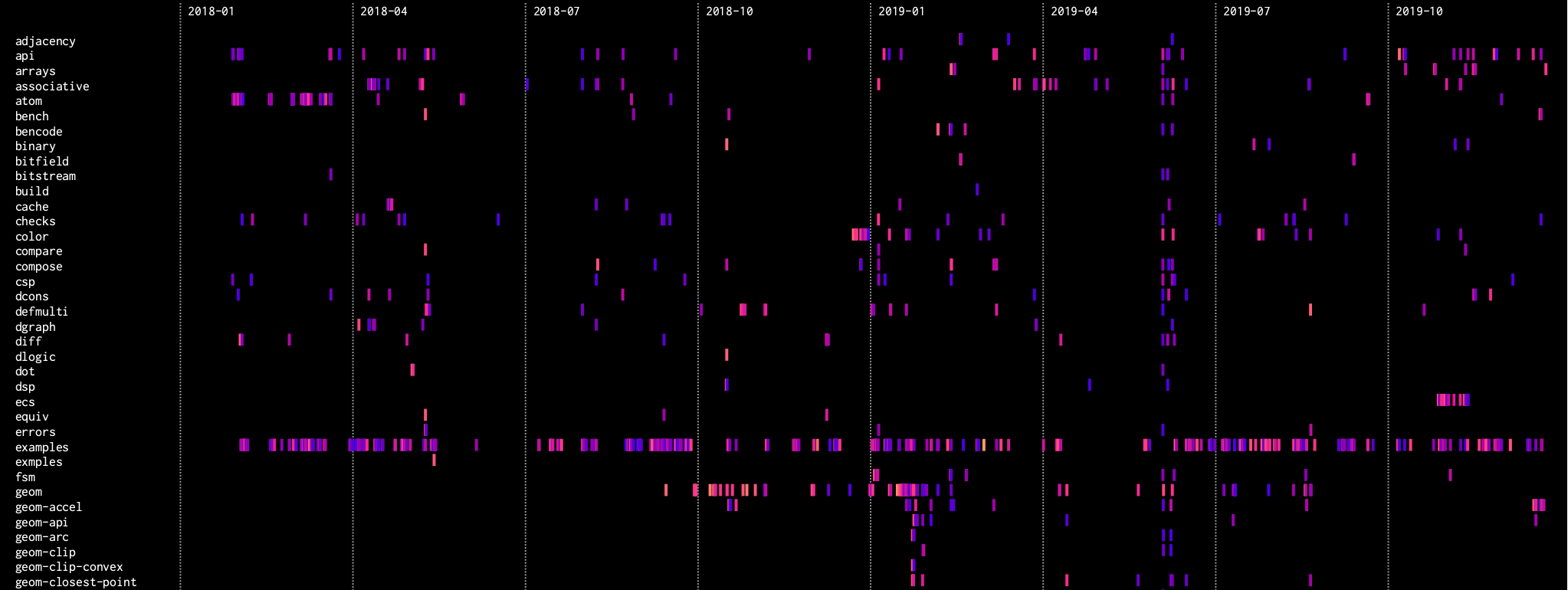 | Heatmap visualization of this mono-repo's commits | | Source |
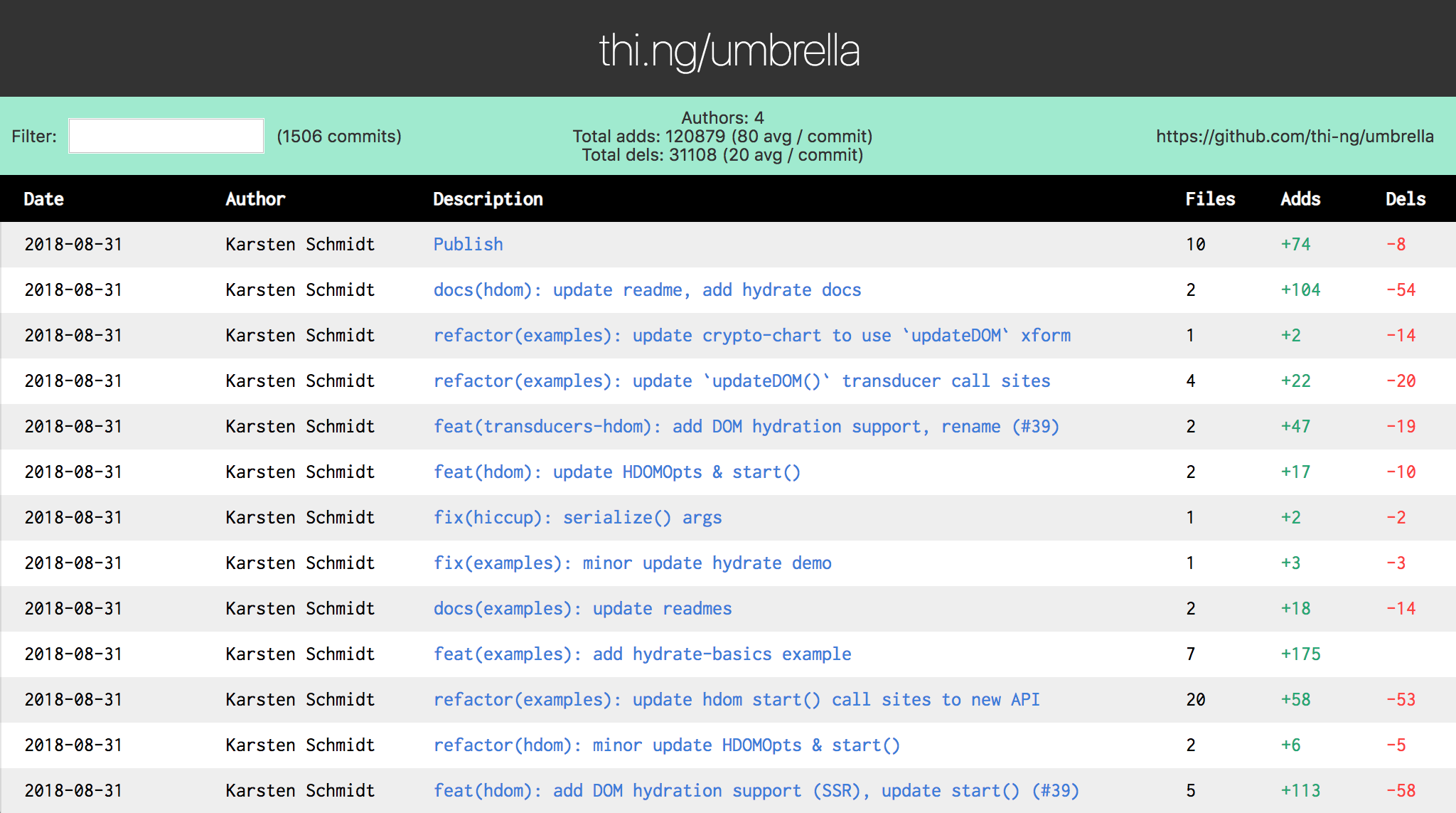 | Filterable commit log UI w/ minimal server to provide commit history | Demo | Source |
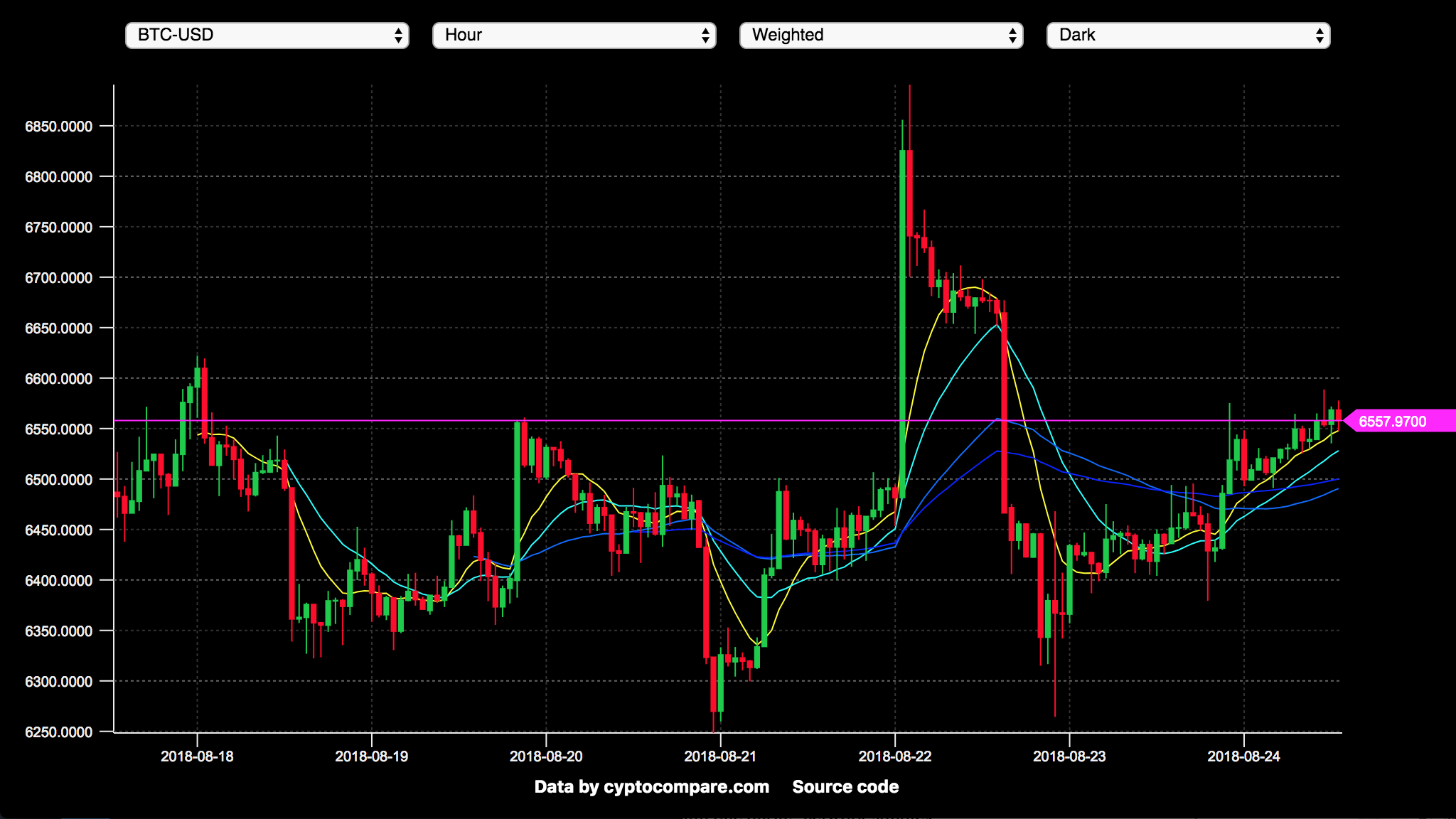 | Basic crypto-currency candle chart with multiple moving averages plots | Demo | Source |
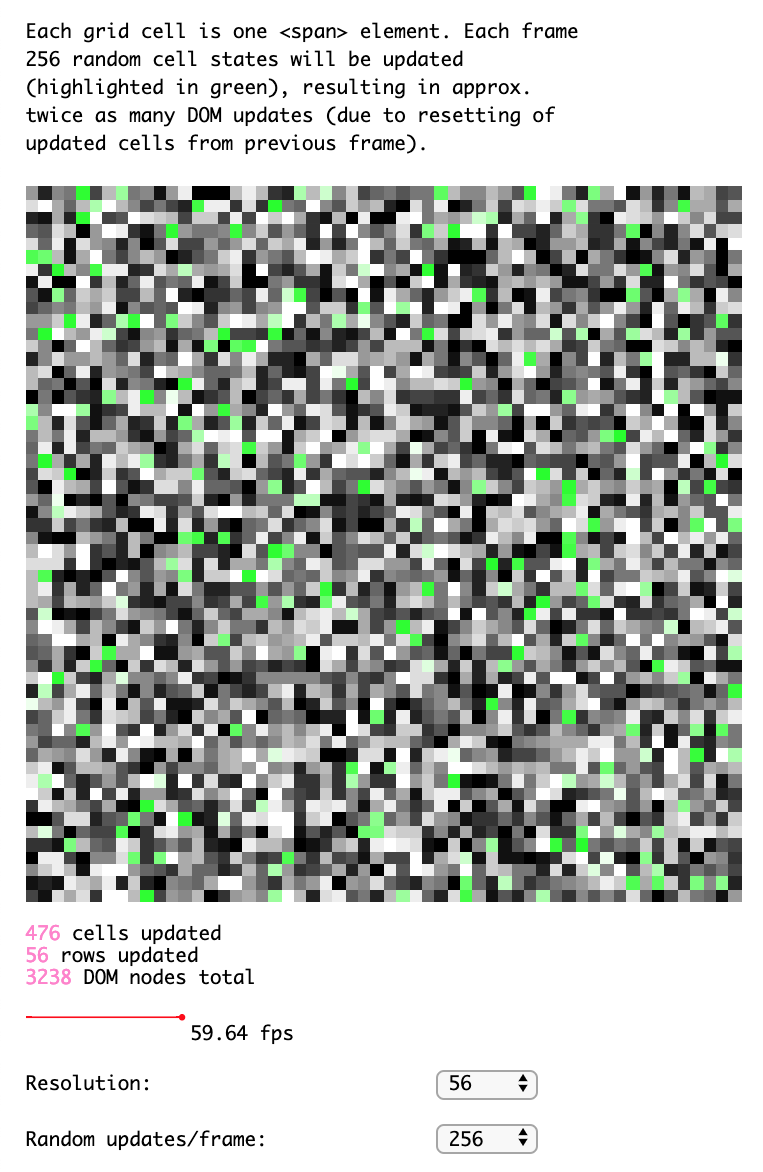 | hdom update performance benchmark w/ config options | Demo | Source |
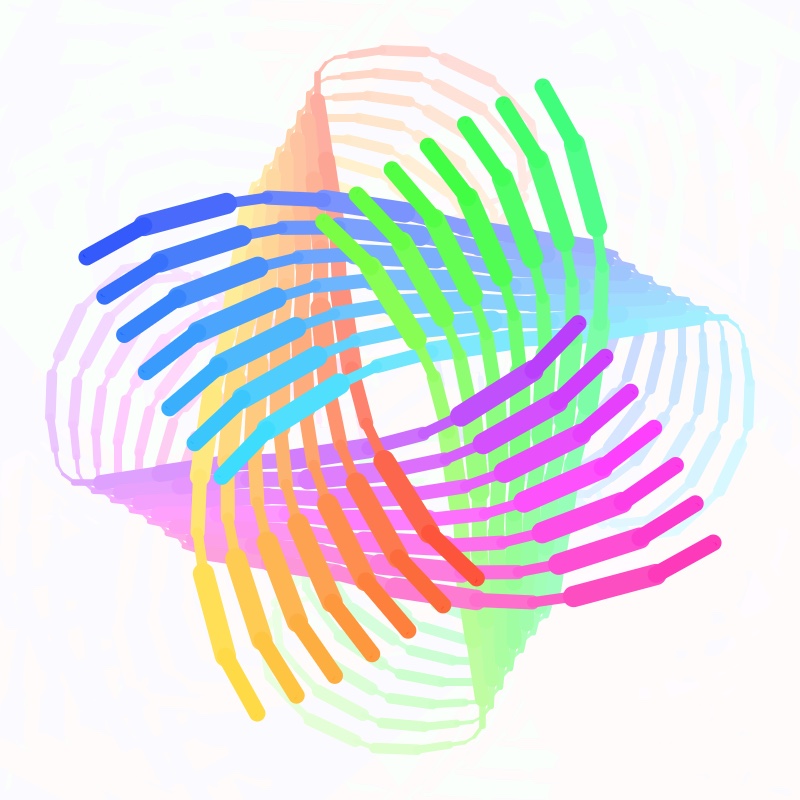 | Interactive pattern drawing demo using transducers | Demo | Source |
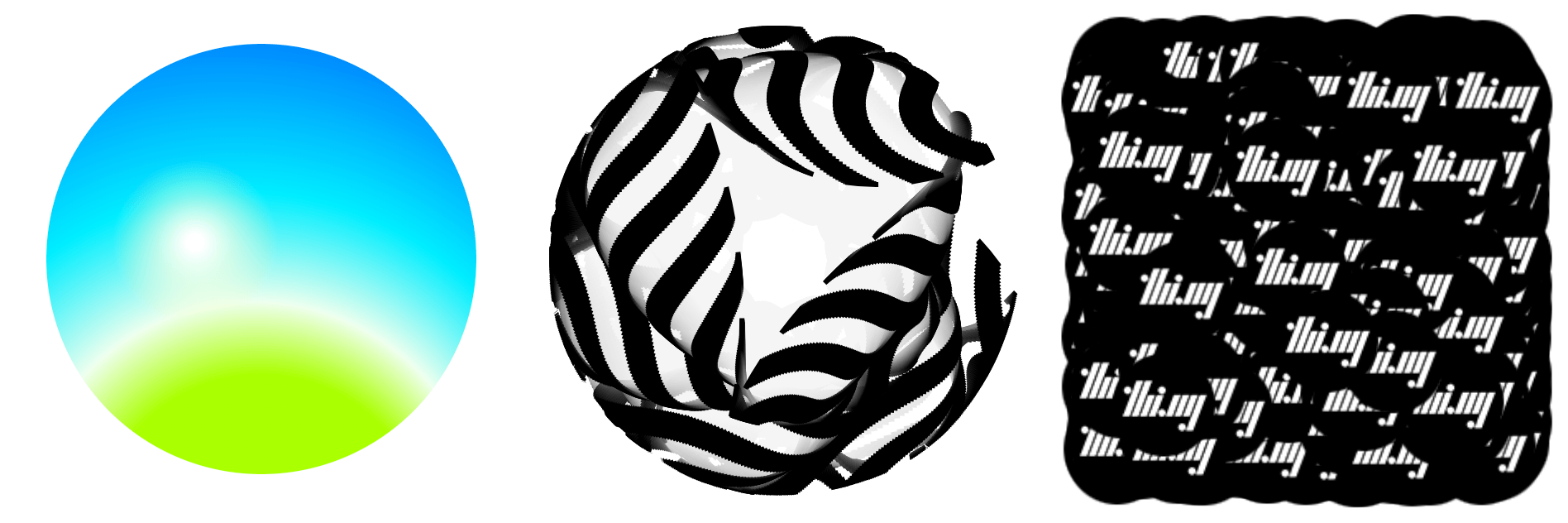 | Various hdom-canvas shape drawing examples & SVG conversion / export | Demo | Source |
| Custom dropdown UI component w/ fuzzy search | Demo | Source |
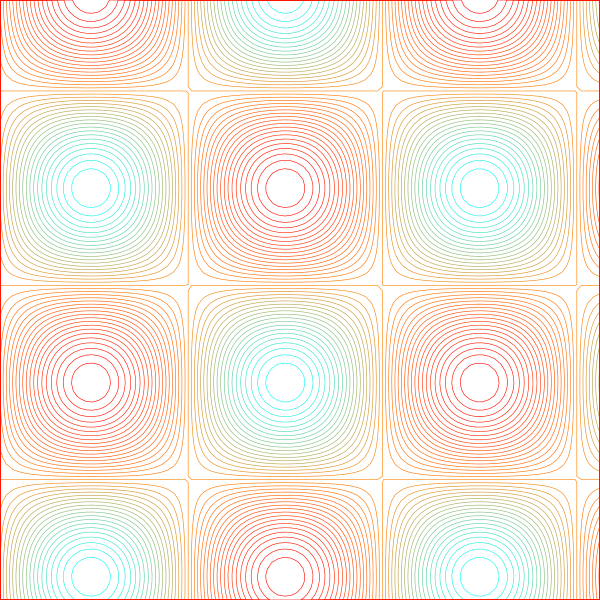 | Animated sine plasma effect visualized using contour lines | Demo | Source |
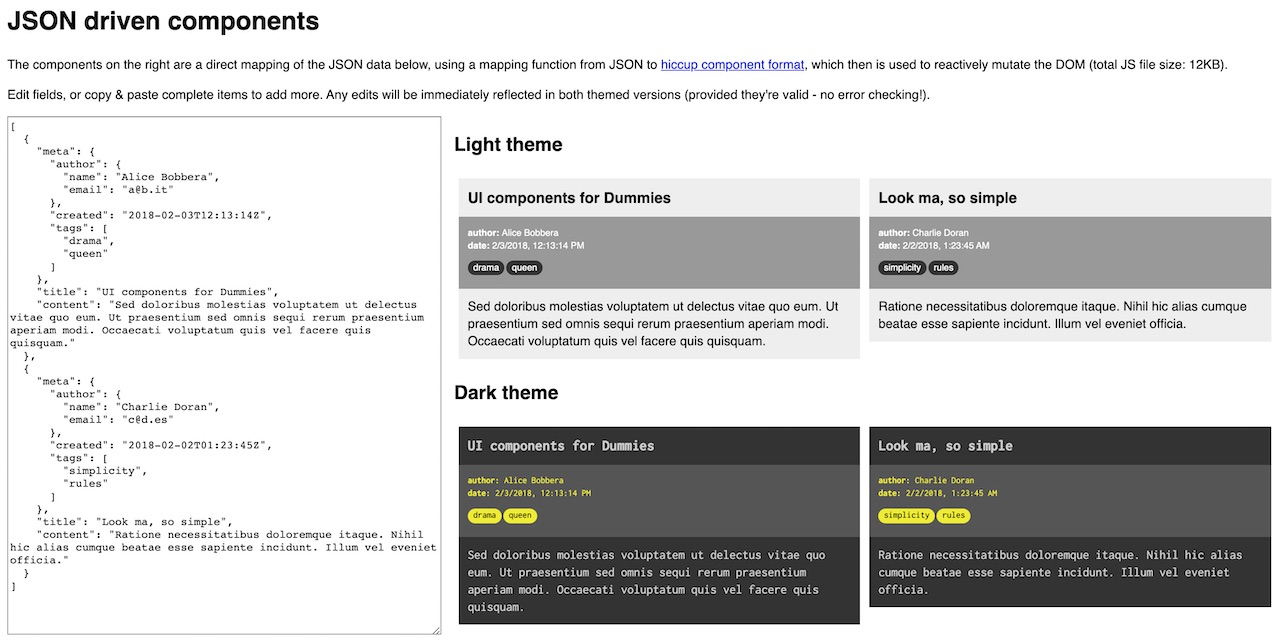 | Transforming JSON into UI components | Demo | Source |
 | Worker based, interactive Mandelbrot visualization | Demo | Source |
 | CLI util to visualize umbrella pkg stats | | Source |
 | Unison wavetable synth with waveform editor | Demo | Source |
| Demonstates various rdom usage patterns | Demo | Source |
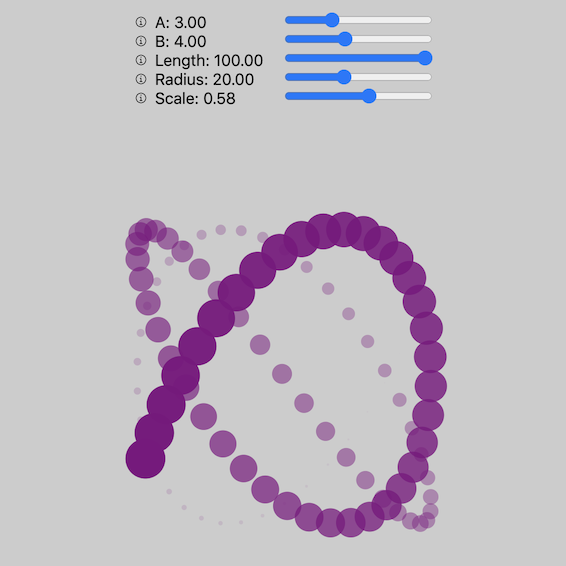 | rdom & hiccup-canvas interop test | Demo | Source |
| Full umbrella repo doc string search w/ paginated results | Demo | Source |
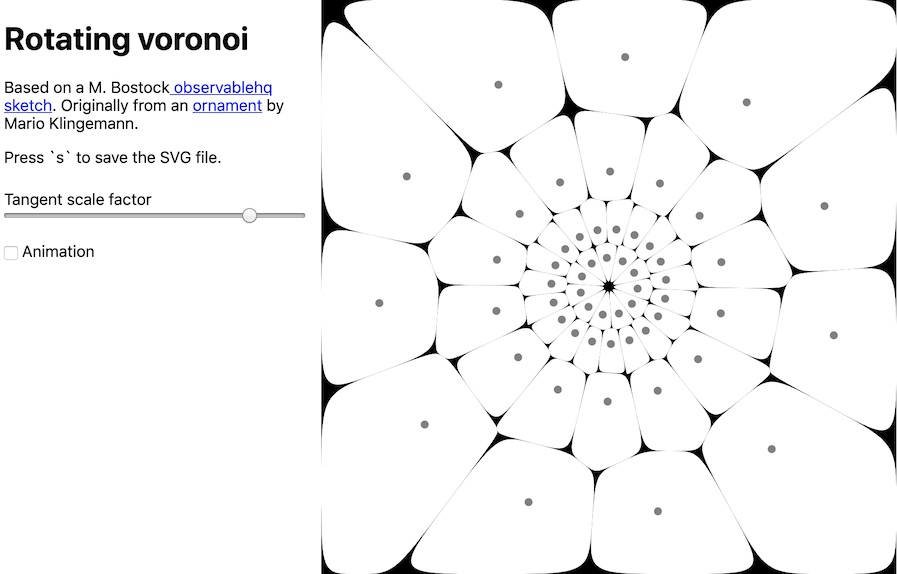 | Animated Voronoi diagram, cubic splines & SVG download | Demo | Source |
 | Minimal demo of using rstream constructs to form an interceptor-style event loop | Demo | Source |
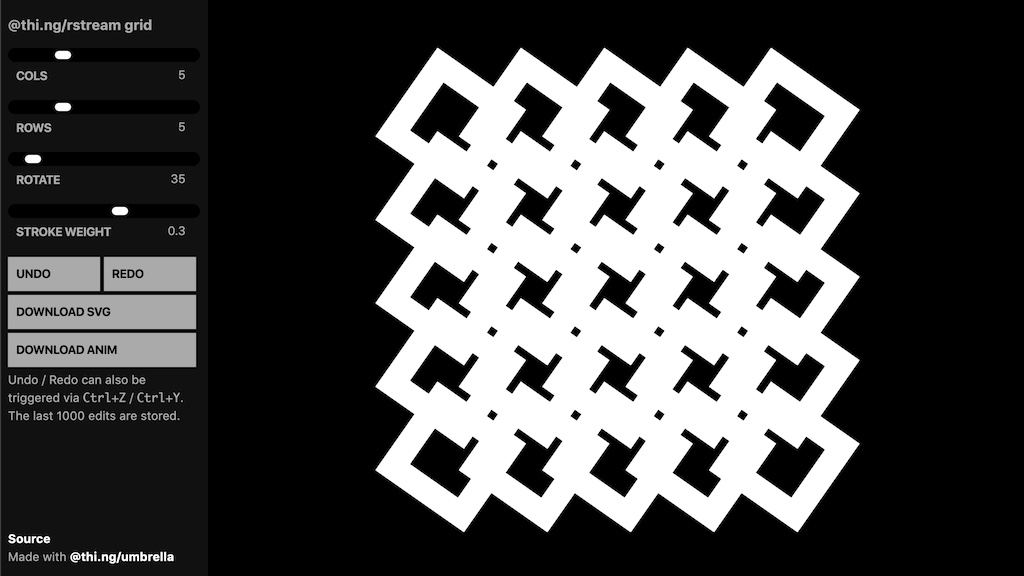 | Interactive grid generator, SVG generation & export, undo/redo support | Demo | Source |
 | Fork-join worker-based raymarch renderer | Demo | Source |
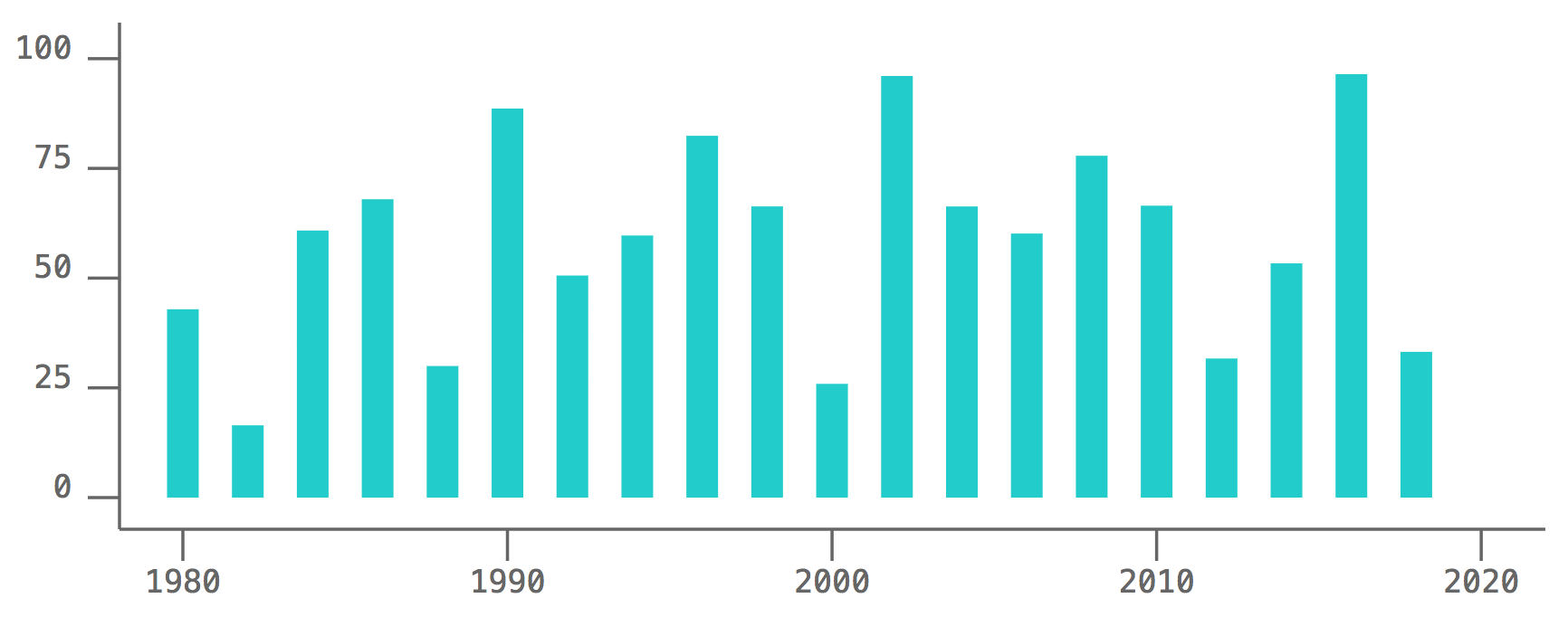 | Simplistic SVG bar chart component | Demo | Source |
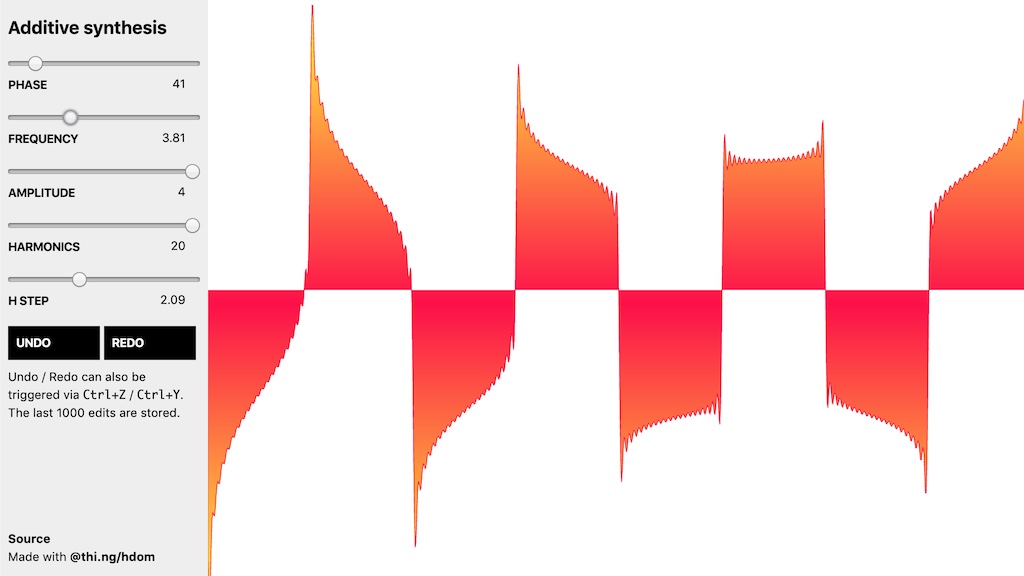 | Additive waveform synthesis & SVG visualization with undo/redo | Demo | Source |
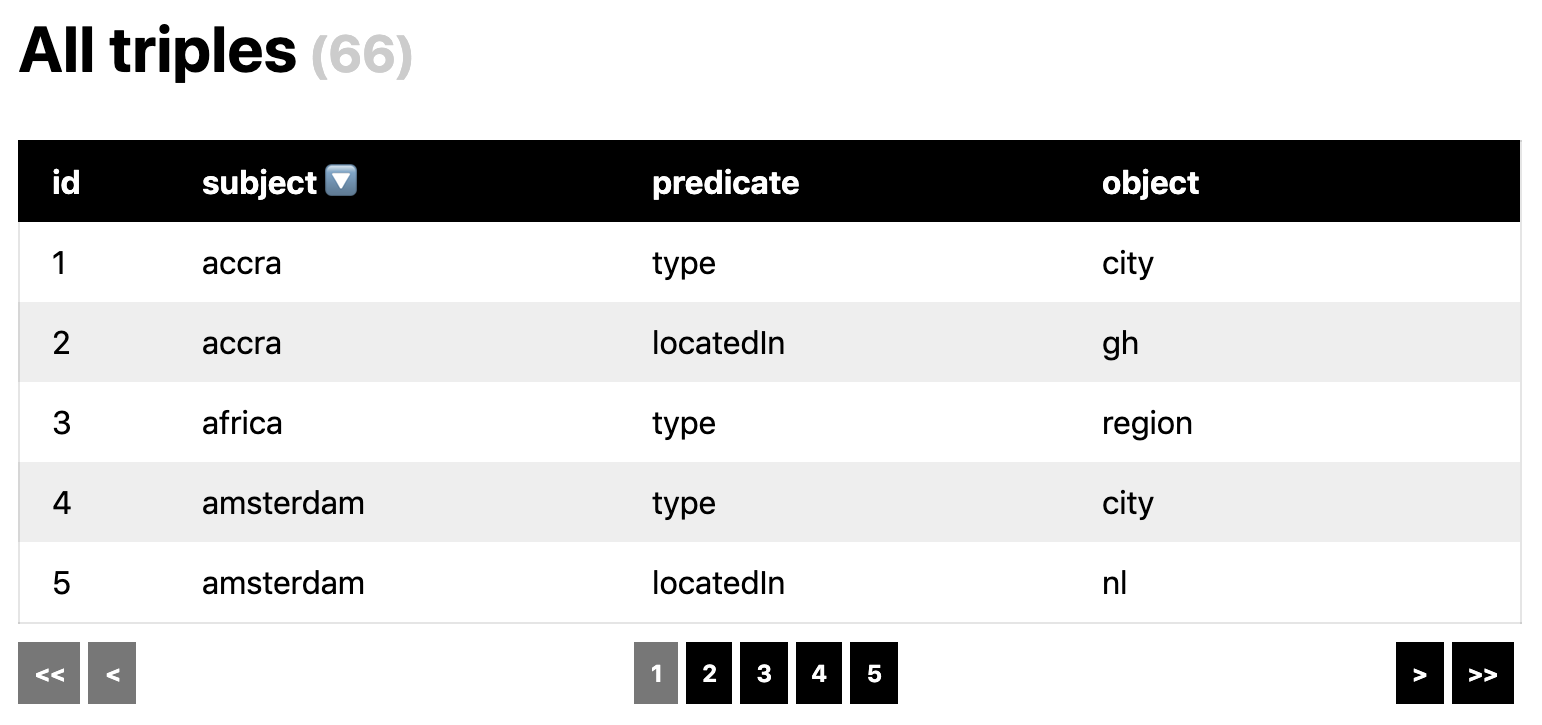 | Triple store query results & sortable table | Demo | Source |
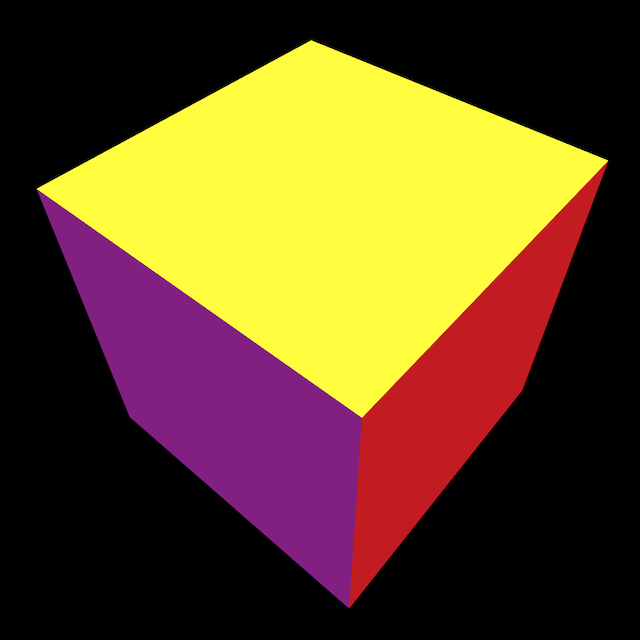 | WebGL multi-colored cube mesh | Demo | Source |
 | WebGL instancing, animated grid | Demo | Source |
 | WebGL MSDF text rendering & particle system | Demo | Source |
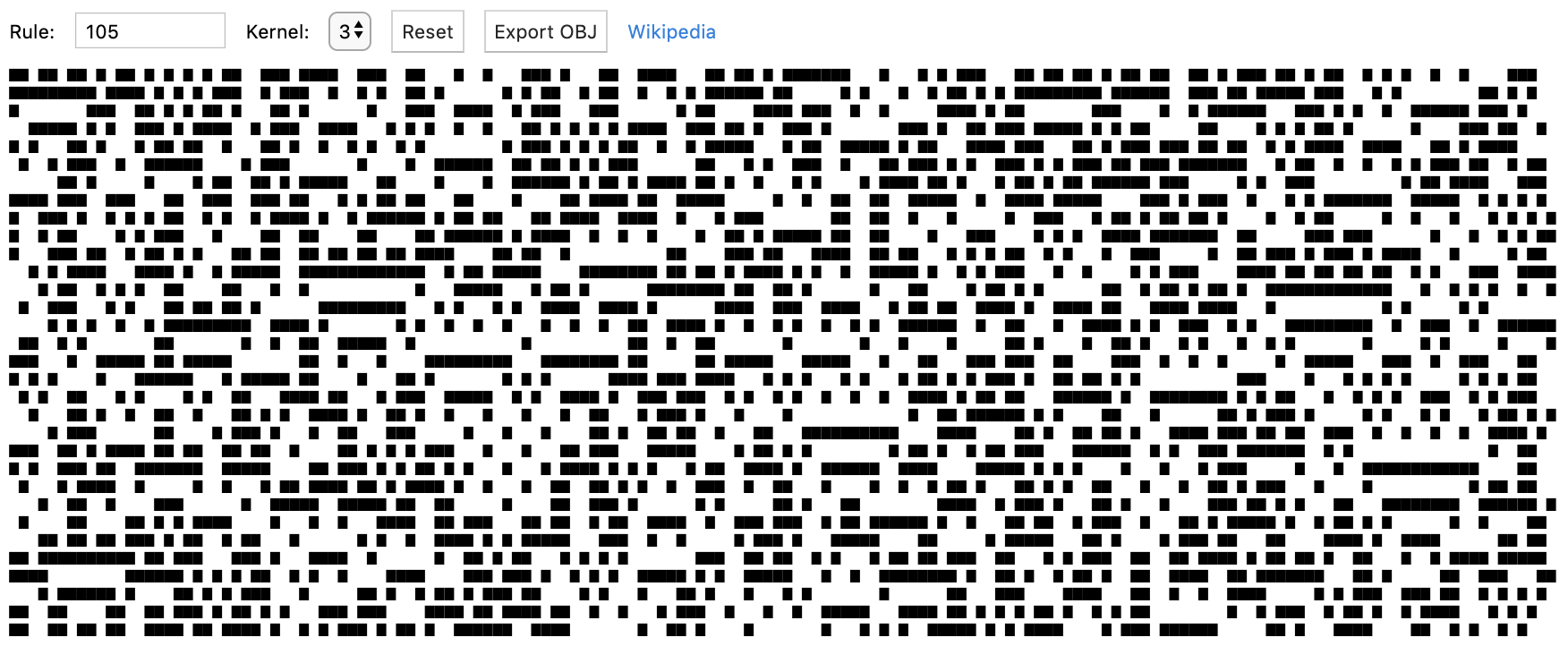 | 1D Wolfram automata with OBJ point cloud export | Demo | Source |
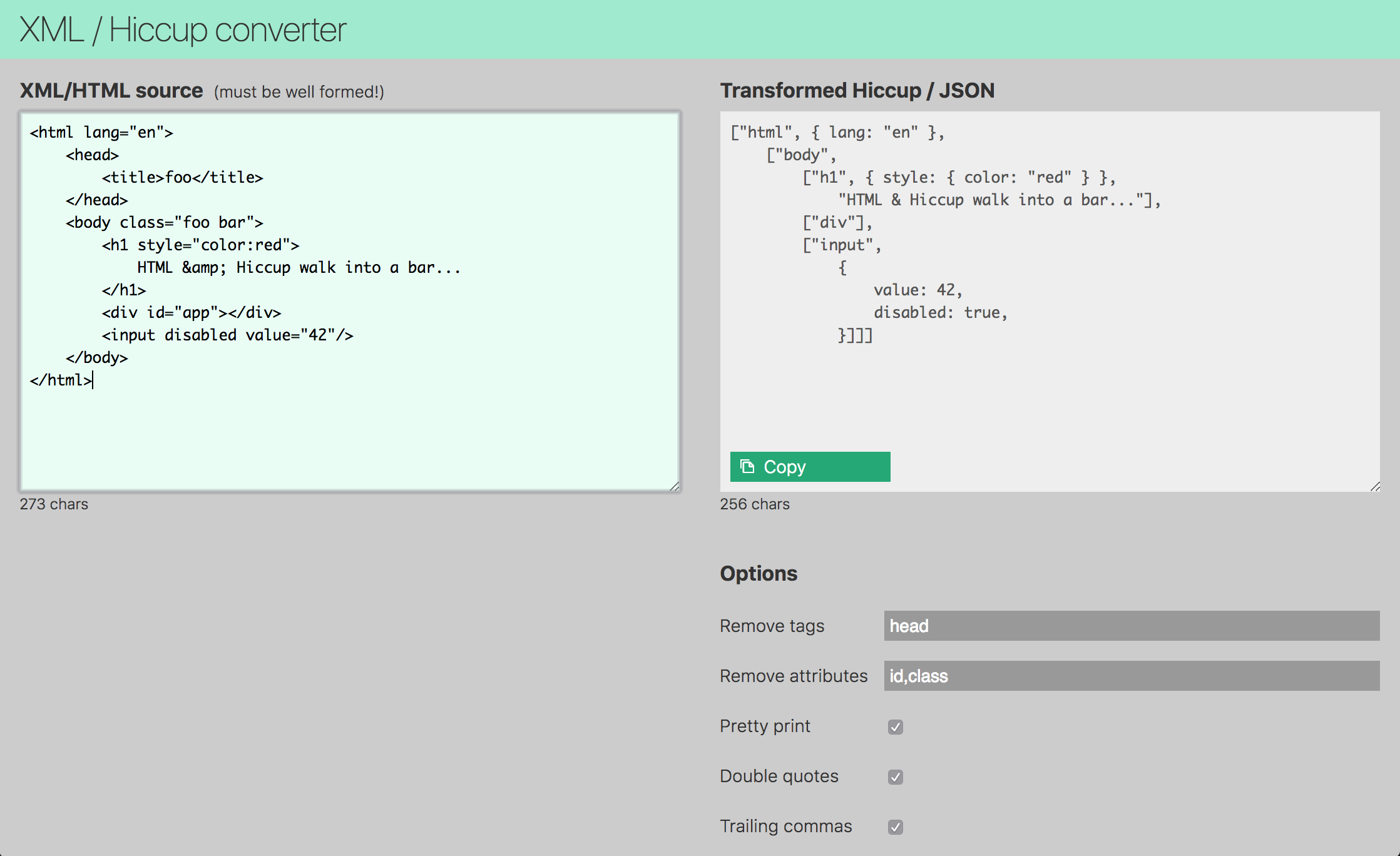 | XML/HTML/SVG to hiccup/JS conversion | Demo | Source |
Basic usage patterns
xform = tx.comp(
tx.filter((x) => (x & 1) > 0),
tx.distinct(),
tx.map((x) => x * 3)
);
tx.transduce(xform, tx.push(), [1, 2, 3, 4, 5, 4, 3, 2, 1]);
tx.transduce(xform, tx.conj(), [1, 2, 3, 4, 5, 4, 3, 2, 1]);
[...tx.iterator(xform, [1, 2, 3, 4, 5])]
[...tx.filter((x) => /[A-Z]/.test(x), "Hello World!")]
f = tx.step(xform);
f(1)
f(2)
f(3)
f(4)
f = tx.step(take)
Interpolation & SVG generation
This example uses the
@thi.ng/geom
package for quick SVG generation.

import { asSvg, svgDoc, circle, polyline } from "@thi.ng/geom";
const values = [5, 10, 4, 8, 20, 2, 11, 7];
const vertices = [...tx.iterator(
tx.comp(
tx.interpolateHermite(10),
tx.mapIndexed((x, y) => [x, y])
),
tx.extendSides(values, 1, 2)
)];
asSvg(
svgDoc(
{ width: 800, height: 200, "stroke-width": 0.1 },
polyline(vertices, { stroke: "red" }),
...values.map((y, x) => circle([x * 10, y], 0.2))
)
)
Fuzzy search
[...tx.filterFuzzy("ho", ["hello", "hallo", "hey", "heyoka"])]
[...tx.filterFuzzy("hlo", ["hello", "hallo", "hey", "heyoka"])]
[...tx.filterFuzzy(
[1, 3],
{ key: (x) => x.tags },
[
{ tags: [1, 2, 3] },
{ tags: [2, 3, 4] },
{ tags: [4, 5, 6] },
{ tags: [1, 3, 6] }
]
)]
Histogram generation & result grouping
tx.transduce(tx.map((x) => x.toUpperCase()), tx.frequencies(), "hello world");
tx.reduce(tx.frequencies(), [1, 1, 1, 2, 3, 4, 4]);
tx.frequencies([1, 1, 1, 2, 3, 4, 4]);
tx.frequencies(
(x) => x.length,
"my camel is collapsing and needs some water".split(" ")
);
tx.groupByMap(
{ key: (x) => x.length },
"my camel is collapsing and needs some water".split(" ")
);
[...tx.page(0, 5, tx.range(12))]
[...tx.iterator(tx.comp(tx.page(1, 5), tx.map(x => x * 10)), tx.range(12))]
[...tx.iterator(tx.comp(tx.page(2, 5), tx.padLast(5, "n/a")), tx.range(12))]
[...tx.page(3, 5, tx.range(12))]
Multiplexing / parallel transducer application
multiplex and multiplexObj can be used to transform values in
parallel using the provided transducers (which can be composed as usual)
and results in a tuple or keyed object.
tx.transduce(
tx.multiplex(
tx.map((x) => x.charAt(0)),
tx.map((x) => x.toUpperCase()),
tx.map((x) => x.length)
),
tx.push(),
["Alice", "Bob", "Charlie"]
);
tx.transduce(
tx.multiplexObj({
initial: tx.map((x) => x.charAt(0)),
name: tx.map((x) => x.toUpperCase()),
len: tx.map((x) => x.length)
}),
tx.push(),
["Alice", "Bob", "Charlie"]
);
Moving average using sliding window
tx.transduce(
tx.comp(
tx.partition(5, 1),
tx.map(x => tx.reduce(tx.mean(), x))
),
tx.push(),
[1, 2, 3, 3, 4, 5, 5, 6, 7, 8, 8, 9, 10]
)
[...tx.movingAverage(5, [1, 2, 3, 3, 4, 5, 5, 6, 7, 8, 8, 9, 10])]
Benchmark function execution time
fn = () => {
let x;
for (i = 0; i < 1e6; i++) {
x = Math.cos(i);
}
return x;
};
tx.transduce(tx.benchmark(), tx.mean(), tx.repeatedly(fn, 100));
Apply inspectors to debug transducer pipeline
tx.transduce(
tx.comp(
tx.trace("orig"),
tx.map((x) => x + 1),
tx.trace("mapped"),
tx.filter((x) => (x & 1) > 0)
),
tx.push(),
[1, 2, 3, 4]
);
Stream parsing / structuring
The struct transducer is simply a composition of: partitionOf -> partition -> rename -> mapKeys. See code
here.
[
...tx.struct(
[["id", 1, (id) => id[0]], ["pos", 2], ["vel", 2], ["color", 4]],
[0, 100, 200, -1, 0, 1, 0.5, 0, 1, 1, 0, 0, 5, 4, 0, 0, 1, 1]
)
];
CSV parsing
tx.transduce(
tx.comp(
tx.mapcat((x) => x.split("\n")),
tx.map((x) => x.split(",")),
tx.rename({ id: 0, name: 1, alias: 2, num: "length" })
),
tx.push(),
["100,typescript\n101,clojure,clj\n110,rust,rs"]
);
Early termination
tx.transduce(tx.comp(tx.flatten(), tx.take(7)), tx.push(), [
1,
[2, [3, 4, [5, 6, [7, 8], 9, [10]]]]
]);
Scan operator
xform = tx.comp(
tx.scan(tx.count()),
tx.map(x => [...tx.repeat(x,x)]),
tx.scan(tx.pushCopy())
)
[...tx.iterator(xform, [1, 1, 1, 1])]
tx.transduce(tx.comp(tx.scan(tx.count()), tx.scan(tx.pushCopy())), tx.push(), [1,1,1,1])
Weighted random choices
[...tx.take(10, tx.choices("abcd", [1, 0.5, 0.25, 0.125]))];
tx.transduce(
tx.take(1000),
tx.frequencies(),
tx.choices("abcd", [1, 0.5, 0.25, 0.125])
);
Keyframe interpolation
See
tween()
docs for details.
[
...tween(
10,
0,
100,
(a, b) => [a, b],
([a, b], t) => Math.floor(a + (b - a) * t),
[20, 100],
[50, 200],
[80, 0]
)
];
API
Generated API docs
Types
Apart from type aliases, the only real types defined are:
Reducer
Reducers are the core building blocks of transducers. Unlike other
implementations using OOP approaches, a Reducer in this lib is a
simple 3-element array of functions, each addressing a separate
processing step.
Since v0.6.0 the bundled reducers are all wrapped in functions to
provide a uniform API (and some of them can be preconfigured and/or are
stateful closures). However, it's fine to define stateless reducers as
constant arrays.
interface Reducer<A, B> extends Array<any> {
[0]: () => A;
[1]: (acc: A) => A;
[2]: (acc: A, x: B) => A | Reduced<A>;
}
const push: Reducer<any[], any> = [
() => [],
(acc) => acc,
(acc, x) => (acc.push(x), acc)
];
partition, partitionBy, streamSort, streamShuffle are (examples
of) transducers making use of their 1-arity completing function.
Reduced
class Reduced<T> implements IDeref<T> {
protected value: T;
constructor(val: T);
deref(): T;
}
Simple type wrapper to identify early termination of a reducer. Does not
modify wrapped value by injecting magic properties. Instances can be
created via reduced(x) and handled via these helper functions:
reduced(x: any): anyisReduced(x: any): booleanensureReduced(x: any): Reduced<any>unreduced(x: any): any
IReducible
By default reduce() consumes inputs via the standard ES6 Iterable
interface, i.e. using a for..of.. loop, but uses optimized routes
for some types: Array-like inputs are consumed via a traditional
for-loop and custom optimized iterations can be provided via
implementations of the IReducible interface in the source collection
type. Examples can be found here:
Note: The IReducible interface is only used by reduce(),
transduce() and run().
Transducer
From Rich Hickey's original definition:
A transducer is a transformation from one reducing function to another
As shown in the examples above, transducers can be dynamically composed
(using comp()) to form arbitrary data transformation pipelines without
causing large overheads for intermediate collections.
type Transducer<A, B> = (rfn: Reducer<any, B>) => Reducer<any, A>;
function map<A, B>(fn: (x: A) => B): Transducer<A, B> {
return (rfn: Reducer<any, B>) => {
return [
() => rfn[0](),
(acc) => rfn[1](acc),
(acc, x: A) => rfn[2](acc, fn(x))
];
};
}
function dedupe<T>(): Transducer<T, T> {
return (rfn: Reducer<any, T>) => {
let prev = {};
return [
() => rfn[0](),
(acc) => rfn[1](acc),
(acc, x) => {
acc = prev === x ? acc : rfn[2](acc, x);
prev = x;
return acc;
}
];
};
}
IXform interface
Interface for types able to provide some internal functionality (or
derive some related transformation) as Transducer. Implementations of
this interface can be directly passed to all functions in this package
where a Transducer arg is expected.
class Mul implements IXform<number, number> {
constructor(public factor = 10) {}
xform() {
return map((x) => this.factor * x);
}
}
transduce(new Mul(11), push(), range(4))
transduce(
comp(drop(1), new Mul(11), takeNth(2)),
push(),
range(4)
)
Composition & execution
comp
comp(f1, f2, ...)
Returns new transducer composed from given transducers. Data flow is
from left to right. Offers fast paths for up to 10 args. If more are
given, composition is done dynamically via for loop.
compR
compR(rfn: Reducer<any, any>, fn: (acc, x) => any): Reducer<any, any>
Helper function to compose reducers.
iterator
iterator<A, B>(tx: Transducer<A, B>, xs: Iterable<A>): IterableIterator<B>
Similar to transduce(), but emits results as ES6 iterator (and hence
doesn't use a reduction function).
reduce
reduce<A, B>(rfn: Reducer<A, B>, acc?: A, xs: Iterable<B>): A
Reduces xs using given reducer and optional initial
accumulator/result. If xs implements the IReducible interface,
delegates to that implementation. Likewise, uses a fast route if xs is
an ArrayLike type.
reduceRight
reduceRight<A, B>(rfn: Reducer<A, B>, acc?: A, xs: ArrayLike<B>): A
Similar to reduce, however only accepts ArrayLike sources and reduces them
into right-to-left order.
transduce
transduce<A, B, C>(tx: Transducer<A, B>, rfn: Reducer<C, B>, acc?: C, xs: Iterable<A>): C
Transforms iterable using given transducer and combines results with
given reducer and optional initial accumulator/result.
transduceRight
transduceRight<A, B, C>(tx: Transducer<A, B>, rfn: Reducer<C, B>, acc?: C, xs: ArrayLike<A>): C
Similar to transduce, however only accepts ArrayLike sources and processes
them into right-to-left order.
run
run<A, B>(tx: Transducer<A, B>, fx: (x: B) => void, xs: Iterable<A>)
Transforms iterable with given transducer and optional side effect
without any reduction step. If fx is given it will be called with
every value produced by the transducer. If fx is not given, the
transducer is assumed to include at least one sideEffect() step
itself. Returns nothing.
Transducers
All of the following functions can be used and composed as transducers.
With a few exceptions, most also accept an input iterable and then
directly yield a transforming iterator, e.g.
tx.transduce(tx.map((x) => x*10), tx.push(), tx.range(4))
[...tx.map((x) => x*10, tx.range(4))]
Generators / Iterators
Reducers
As with transducer functions, reducer functions can also given an
optional input iterable. If done so, the function will consume the input
and return a reduced result (as if it would be called via reduce()).
Authors
Maintainer
Contributors
If this project contributes to an academic publication, please cite it as:
@misc{thing-transducers,
title = "@thi.ng/transducers",
author = "Karsten Schmidt and others",
note = "https://thi.ng/transducers",
year = 2016
}
License
© 2016 - 2021 Karsten Schmidt // Apache Software License 2.0



































